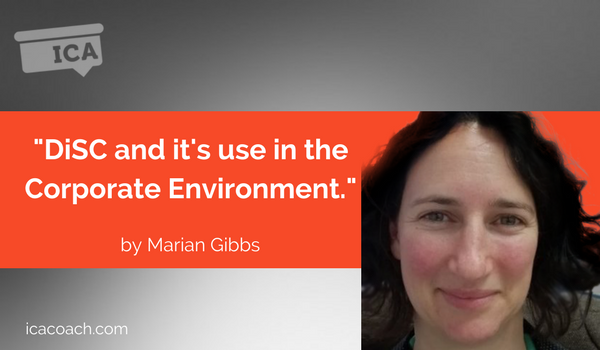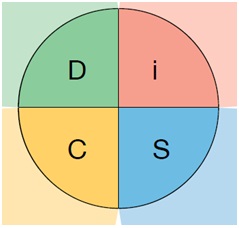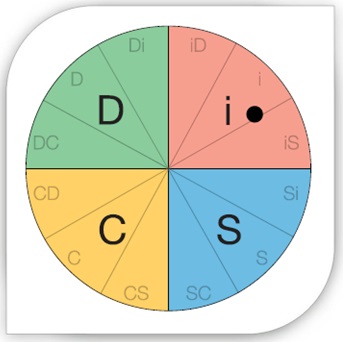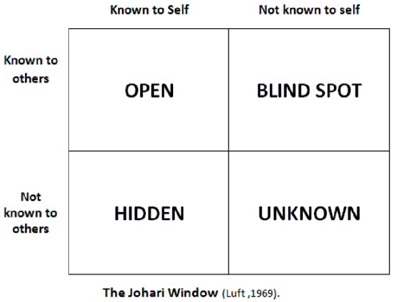
Research Paper By Marian Gibbs
(Career Coach, NEW ZEALAND)
Application in the Corporate Environment & Lessons for the Coaching Context
Executive Summary
This case study provides and overview of the DiSC profiling tool and its practical application. It reviews how the DiSC tool has been applied within a corporate environment (a New Zealand based multi-national) and then discusses how this could be applied in a Coaching context and environment. The specific version of DiSC being considered is ‘Everything DiSC’, which proves to be a credible and practical tool with significant use in the Coaching arena.
The Organisation
The organisation is one of the largest in New Zealand, with over 18,000 employees globally. DiSC has been used within the NZ based businesses for 3 years. In that time, it has been used as the standard psychometric profiling tool used across the various Business Units. Psychometric profiling has been used in support of all leadership-related programmes including programmes for First time Leaders, and Managers in broader, more complex Leadership roles. In addition, it has also been used as part of Functional Pathway programmes (i.e. Sales Leadership; Customer Service). Finally, it is also used at the Executive/Leadership Level in conjunction with other tools for self-development, such as 360⁰ Feedback surveys. Over this period, thousands of reports have been created and debriefed.
What is DiSC?[1]
Everything DiSC is a personal development assessment that measures an individual’s behavioural style. It is designed to help an individual understand his or her behaviour in the workplace, understand the behaviour of others and how to use this knowledge in different work situations. www.integro.com.au (a Provider of Everything DiSC)
Essentially, DiSC is a tool for understanding oneself and others better. Specifically, it focuses on two key dimensions of personality, based on William Moulton Marston’s[2] “Emotions of Normal People” (published back in 1928). These include:
- Affiliation: the extent to which we need to relate to others
- Control: the extent to which we relinquish or take control
DiSC was first developed in the 1950’s as a 24 question survey. This created the basic DiSC model below, with the following four quadrants, which used Marston’s original terminology. Unfortunately, the language of day don’t fit well with today’s language, so it is necessary to look past the word that the letters derive from to consider what they are trying to describe:
 Dominance: direct, results-oriented, strong-willed and forceful.
Dominance: direct, results-oriented, strong-willed and forceful.
Influence: sociable, enthusiastic, optimistic and lively.
Steadiness : gentle, supportive, patient and helpful.
Conscientiousness: analytical, private, precise and logical.
DiSC measures an individual’s tendency towards these quadrants, along with the intensity of this preference. Typically, we would see people fall predominantly into one of these quadrants (though it is possible to tend equally across all regions).
If it was left as this four quadrant model, it would provide a simple, ‘rough & ready’ approach to understanding ourselves and others. It’s worth noting that there are a number of DiSC tools out there in the market. The simple four quadrants are what you might see in other free versions of DiSC that are available online. However, as you might see in other similar tools (i.e.: 16PF; MBTI), there is more complexity within people than just four quadrants could adequately represent. So to provide more clarity, the ‘Everything DiSC’ tool cuts the quadrants further into 12 styles – see the circumflex below:
 The tool used within this organisation was ‘Everything DiSC’ which (in comparison to some other DiSC tools) utilises ‘adaptive testing’ and a 5 point Likert scale (versus forced choice). It notices where individuals answer inconsistently and then automatically adds further questions to clarify. Alternately, it will set further ‘tie-breaker’ questions as needed (so it can identify for example if an individual is sitting as an Si, or and iS, two similar but distinct styles. This adaptive testing helps ensure ‘very good’ reliability of the testing (with an average Alpha value of 0.87[3] (1.0 being perfect, 0.9 being exceptional).
The tool used within this organisation was ‘Everything DiSC’ which (in comparison to some other DiSC tools) utilises ‘adaptive testing’ and a 5 point Likert scale (versus forced choice). It notices where individuals answer inconsistently and then automatically adds further questions to clarify. Alternately, it will set further ‘tie-breaker’ questions as needed (so it can identify for example if an individual is sitting as an Si, or and iS, two similar but distinct styles. This adaptive testing helps ensure ‘very good’ reliability of the testing (with an average Alpha value of 0.87[3] (1.0 being perfect, 0.9 being exceptional).
In addition to the range of DiSC tools in the market, there are also a number of similar psychometric tools that could be used. This includes
When compared with both 16PF and NEO PI-R, Everything DiSC correlates closely, demonstrating the validity of the assessment.
Key Aspects of ‘Everything DiSC’
Once a participant has completed their survey, a report is automatically generated. The report is then debriefed by an accredited Facilitator. The ‘Everything DiSC’ report (along with the Facilitators Supplementary Report) includes the following key sections:
 The report therefore provides a wealth of valuable information about the individual: their natural tendencies; where things get difficult/stressful for them; what gets them motivated; and their needs and their fears.
The report therefore provides a wealth of valuable information about the individual: their natural tendencies; where things get difficult/stressful for them; what gets them motivated; and their needs and their fears.
Additional ‘Everything DiSC’ Resources
There are a number of DiSC profiles that can be created, beyond the general ‘Workplace’ version. This includes variations to suit those in Sales, Management and Leadership. The key ‘drivers’ (as seen in the words around the circumplex above) for each of these varies slightly. In addition, Group Culture reports can be created, to help demonstrate how the team is made up.
Another useful tool is the Comparison Reports, which compares two profiles against each other. A Comparison Report is typically used in this organisation where there is known conflict between two people. It pulls the two individual reports together, so that the similarities and gaps are clear. It identifies the key priorities for each, then looks at each key dimension, which is framed along a continuum (see picture below). Within each dimension, the report highlights the tendencies of each participant, along with potential road-blocks, benefits and tips for working with each other.
 The continuum is useful as it often stops it being an either/or comparison between individuals. Instead it recognises that we all typically sit somewhere along the continuum, which means that with desire, we can slide along the continuum, towards the person we are working with.
The continuum is useful as it often stops it being an either/or comparison between individuals. Instead it recognises that we all typically sit somewhere along the continuum, which means that with desire, we can slide along the continuum, towards the person we are working with.
Application within the Organisation
This case study considers one NZ-based Business Unit, with approximately 120 staff. ‘Everything DiSC’ has been used for the previously mentioned Leadership or Functional development programmes, but also extended further, to include:
- Working with a newly formed Lead Team, working towards becoming a High Performance team
- Working with managers as they have seen gaps in their own team.
The utilisation of DiSC has been a cornerstone tool in efforts to develop a High Performing Team (as defined below) as having:
- A meaningful common purpose that the team has helped shape (see also Simon Sinek’s Golden Circle talk on TED[add link to Appendix])
- Specific performance goals that flow from a common purpose
- A mix of complementary skills – functional, problem-solving, decision making; inter-personal
- A strong commitment to how we work together and on building positive relationships
- Mutual accountability – trust and accountability (which cannot be co-erced
DiSC ties in neatly with elements 3, 4 and 5. DiSC gives a common language that is non-threatening, non-judgemental and is safe for everyone to use. It also enables people to more easily see the mix of complementary skills (#3) within the team.
The first key tenet is that DiSC first builds an individual’s self-awareness of their own behaviours, needs, motivations and fears. Once this is understood, people can use this awareness, and the DiSC theory as a starting point for ‘building positive relationships’ (#4). In sharing with the team their own profile (and in these cases, we did group exercises to highlight both the group’s make-up and the individual profiles), this provides a building block to building ‘trust and accountability’ (#5).
The DiSC Process
When DiSC has been used in formal Leadership programmes, participants have been debriefed in a group setting. However, with the development work of teams in the business, once an individual has completed their DiSC survey online, they were individually debriefed. As this is often the first time they have been through a process like this before, a 1:1 gave them an opportunity to receive the information in a safe and confidential environment. Indeed, the report is considered private to the individual – their Manager or HR cannot insist on a copy. However, they are encouraged to share it wider with their team so that others can start to understand (and work) better with them.
Once individuals have had the opportunity to review the results, a team session has typically been organised, which enables them to view the results holistically and assess what they want to do as a team to improve.
Impact within the Team
There are a number of ways in which using DiSC has impacted the teams within the Business Unit, including:
Feedback on the delivery of the DiSC profile on a 1:1 basis was that it was a powerful tool, with surprise that a stranger (the facilitator) could ‘know me better than I know myself’. As the team was taken through the process at the same time, it had the added advantage of creating an open & safe way of understanding themselves/each other. DiSC pops up in numerous conversations freely, even 6 months down the track, i.e.: ‘that’s your D coming out’ in response to behaviour that they recognise from that quadrant.
DiSC and the Coaching Process
So how does this fit within the Coaching Process? Let’s consider the most recognisable model, the Grow Model[5], and relate it to that:

Using a tool such as DiSC can help across a number of these steps as follows:
| Goal: | For providing the potential for sense-checking that the goal they are seeking is actually going to deliver on what they need at their core (do I actually want the big promotion /to afford a nice holiday/to spend quality time with my family /to meet my needs for nurturance or affiliation, or are there better ways to achieve this?). |
|
Reality:
|
For providing insight into understanding what a client is doing, and why; for understanding how they are impacting and are impacted by others. |
| Obstacles: | For shining a light on where their approach may cause them problems in the future. |
| Options | For offering ways in which they could ‘stretch their rubber band/adapt their approach, to get the best out of their relationships. |
| Way Forward | Like with the goal-setting, choosing actions that align with clients’ needs/values will create steps that feel easier and more motivating to achieve. |
DiSC and Self-Awareness (Reality)
The extent to which a client understands the ‘reality’ of the situation, depends on their own self-awareness. Everything DiSC introduces a powerful concept of the Whole Person (Colby[6]). If you think about an iceberg, what you see above the water line, is just a small part of the actual iceberg (the rest is mostly submerged). The same with people. What we typically see ‘above the line’ are the behaviours of an individual and this is what we react to. Which is fine until someone doesn’t react in the way we expect. Then frustration can arise as their behaviour conflicts with what we expect them to do. However, if we ‘dig below the line’, we see that the behaviour (ours and theirs) are driven by a whole lot of hidden aspects that often don’t even skim across our conscious mind. Things like:
These are all ‘under the line’. So just like the iceberg, we can see that what is under the water line is much bigger and more influential that the iceberg/behaviours that you see with your eyes above the water-line.
This marries nicely with the ICA concept of Underlying Beliefs.
 Why is this important? Understanding this is powerful in two ways. The Johari Window (created Luft, 1969), introduced the idea of the blind spot. Whilst there are many parts of our self that we willingly share with others (the ‘open’ quadrant); there are also parts we ‘hide’, along with parts that others notice, but we don’t (our ‘blind spots’). There are also areas that neither we or others are aware of (‘the unknown’).
Why is this important? Understanding this is powerful in two ways. The Johari Window (created Luft, 1969), introduced the idea of the blind spot. Whilst there are many parts of our self that we willingly share with others (the ‘open’ quadrant); there are also parts we ‘hide’, along with parts that others notice, but we don’t (our ‘blind spots’). There are also areas that neither we or others are aware of (‘the unknown’).
When we go through an exercise such as DiSC, we have a clear tool to start to understand ourselves better. We can start to recognise those ‘under the line’ drivers of our behaviour. This means that the number of our ‘blind spots’ and ‘unknowns’ can reduce, transferring them instead into either the ‘open’ (or potentially ‘hidden’) areas. A tool such as DiSC is particularly powerful in highlighting the ways in which we typically act, how it can be perceived by others, and how we act when we under stress. That gives us options for how we want to approach things in the future.
Secondly, we can begin to recognise that the behaviour (that we see in others) is also driven by other deeper aspects (the ‘below the line’ part of the iceberg). Once we see that their behaviour is just the obvious part of who they are, we can move from (the ICA concept of) reacting to responding. For example, we can:
- Stop ourselves from just reacting to the behaviour, knowing that it being driven by something deeper to that person;
- Consider the ‘below the line’ drivers that are contributing to their behaviour – why are they behaving this way/what are they trying to gain (needs)/avoid (fears)
- Adapt our approach towards them (so that it acknowledges their needs, motivations and fears)
This gives us an ability to influence/bring the best out in the relationships of others – a fundamental skill for success.
When is DiSC most helpful in the Coaching Conversation
So when would you use DiSC? When would you get the most out of the tool? There are a couple of different approaches that a Coach could typically take. DiSC can be a really helpful tool upfront in understanding your client. It may be something you use at the ‘getting to know you’ stage. In addition, you might find that if you are involved in Business/Leadership or Executive Coaching, the tool (or something similar) has already been used in the organisation. In that case it may be as simple as reviewing the existing report. Whichever tool gets used, it will have a varying degree of impact, depending on their base level of self-awareness and the extent to which they see relationships as a cause of frustration.
Alternately a Coach my wish to leave it until there is a clear need. When you start to hear “I can’t believe they did…”, or “they should have…” or “I get so annoyed when s/he/they…”, these are clear indications that a tool that focuses on self-awareness (such as DiSC) could be beneficial.
The debriefing of the DiSC report will open up a range of opportunities from which to coach.
Coaching Exercises
Coaching exercises that may fall out nicely following a debrief could include:
- Wheel of Life:
- The client would define each segment based on the roles they play
- Score each segment based on how each of their ‘priority areas’ are currently met through these roles
- What are the challenges/opportunities coming in the next 12 months or:
- How do you proposed goals support those priority areas
- Daily Journal (or a Keep/Start/Stop Daily Reflection): to help notice your own patterns, reactions and development
- New Experiences: Describe a new experience that recently occurred.
- What did you learn about it,
- What surprised you;
- What was easier/harder than you expected.
- Perspective-building exercises such as
- If you were to take off your hat and put ‘X’s’ on, what would they say?
- What would ‘X’ say about that
- What do you think their perspective is? Why is that important to them?
Conclusion
Everything DiSC is a well-thought out and credible tool for psychometric testing. The existing framework for Everything Disc provides a positive and constructive means for both building an individuals’ self-awareness and then for developing more effective relationships with others. When used across teams, it provides a common, safe language, and recognition that there are deeper drivers at play within ourselves and our work colleagues. The DiSC framework crosses much of what we are likely to encounter as Coaches. And it’s framework keeps the ball squarely in the clients’ court to apply what they learn, to help them reach their goals (and needs) in their life. It is a tool I will be using going forward.
Appendix:
Range of Reports Available/Utilised within the business:
Everything DiSC Workplace Profile
Everything DiSC Management Profile
Everything DiSC Sales Profile
Everything DiSC Work of Leaders Profile
Everything DiSC Group Culture Report
Everything DiSC Facilitator Report
Team View (overview of all ‘circumplexes’)
Comparison Reports (between two profiles)
[1] The reason for the little ‘I’ in DiSC is not deliberate at all. Rather it was a typesetting error that was never corrected!
[2] Interesting fact: Marston is also the creator of Wonder Woman
[3]
[4] https://en.wikipedia.org/wiki/Myers%E2%80%93Briggs_Type_Indicator
[5] https://en.wikipedia.org/wiki/GROW_model
[6] Dr Ralph Colby, co-Founder of Integro, a supplier of Everything DiSC